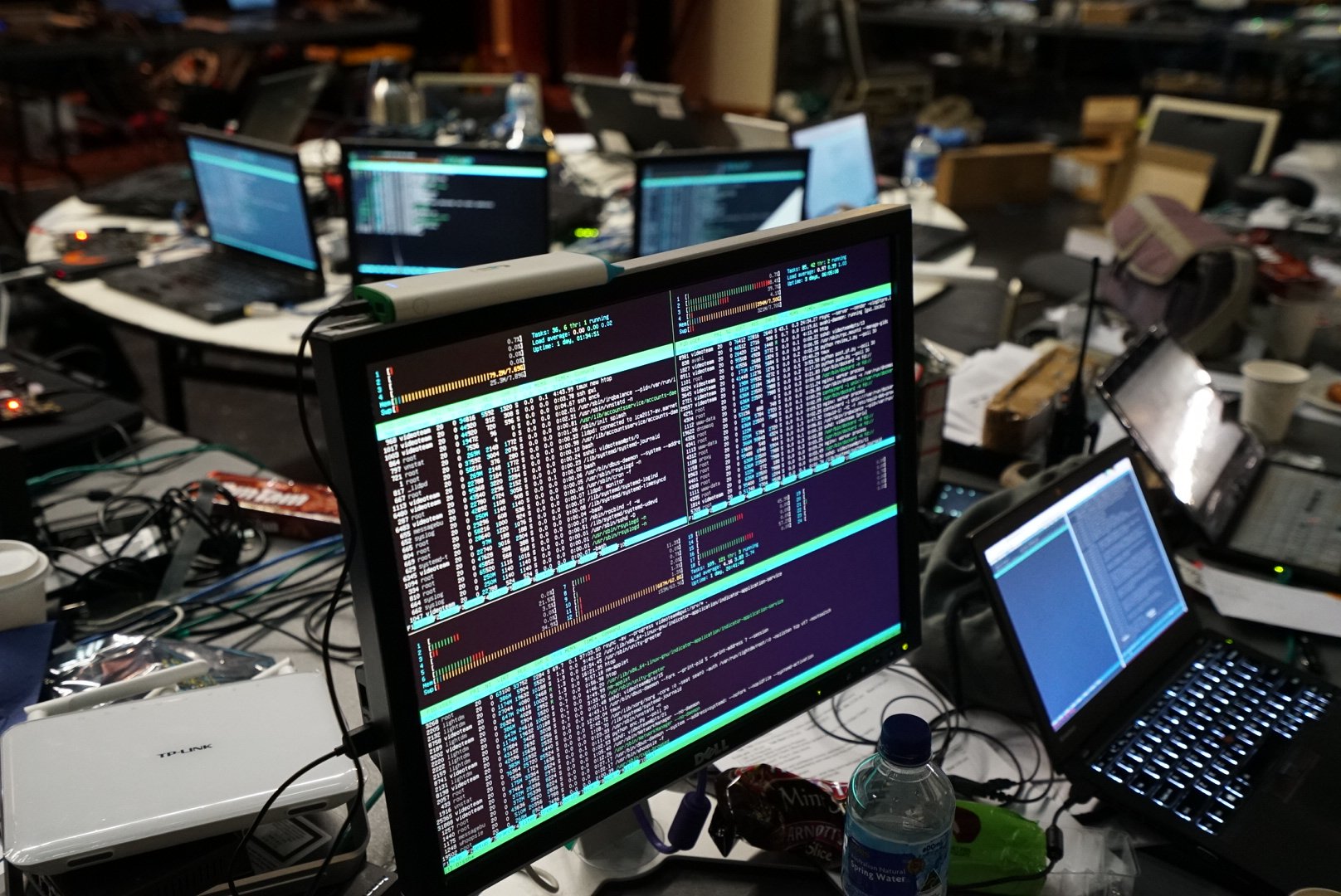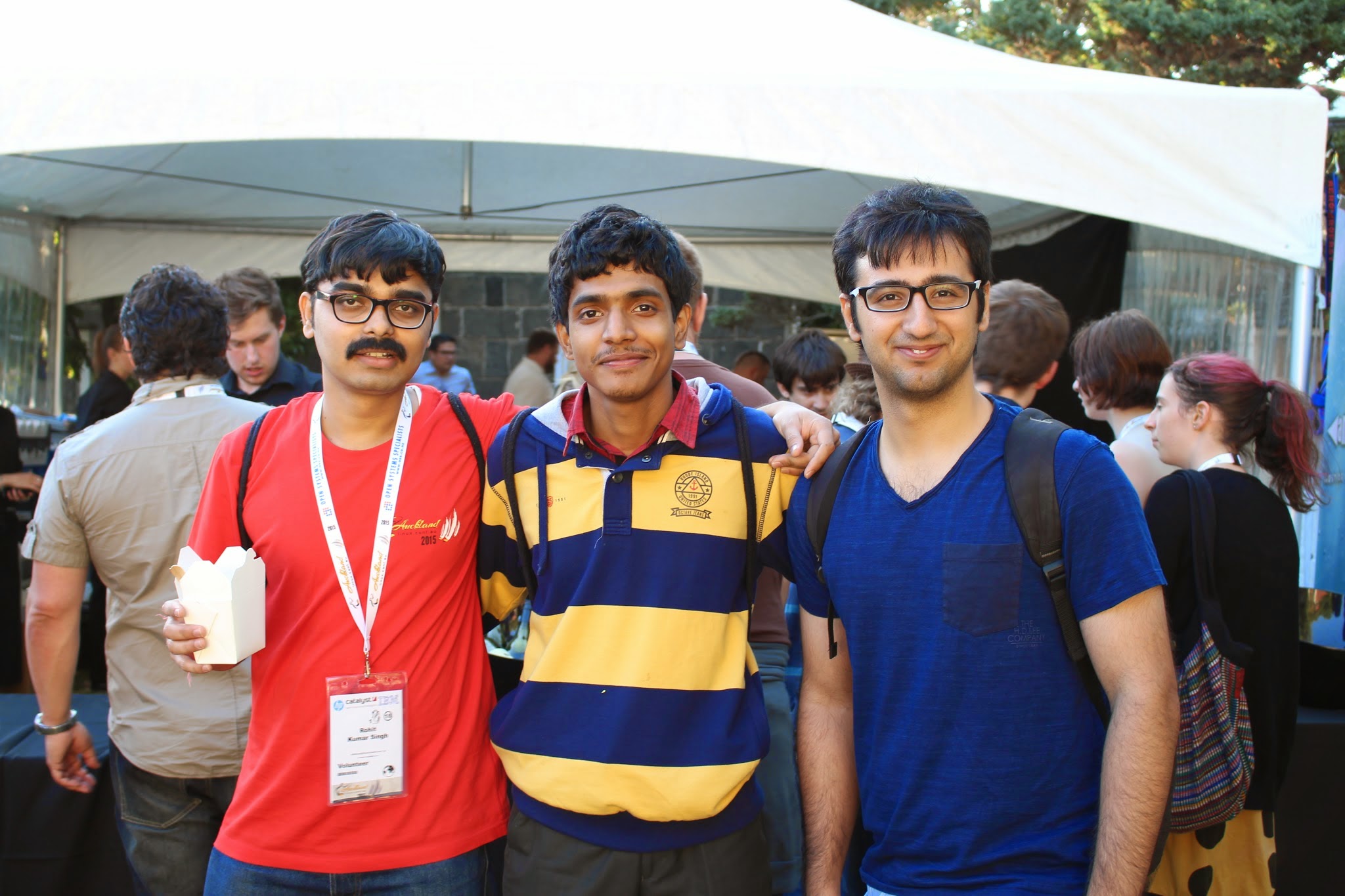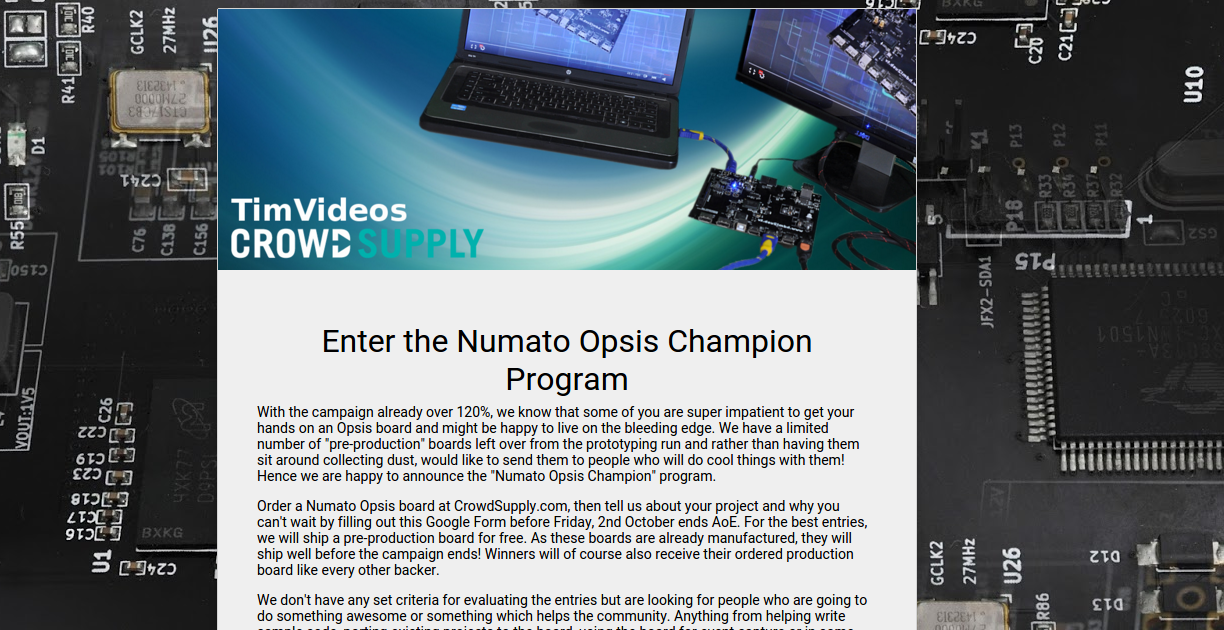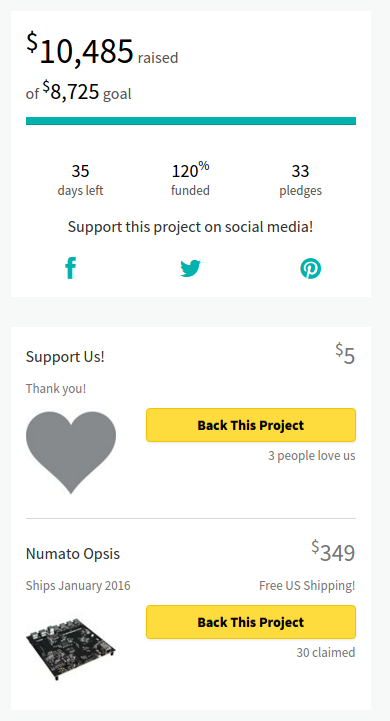-
Get paid to hack on hardware! TimVideos in GSoC
03/16/2017 at 02:51 • 0 commentsAre you a Uni student who is interested hardware, FPGAs or embedded programming? You could get paid to hack by applying to the TimVideos.us organisation for Google Summer of Code!
Not a student? You can help us by sharing this post!
The TimVideos.us project is happy to announce that it is participating in Google Summer of Code 2017 (GSoC2017) and is looking for students to hack on the hardware used to record many open source conferences - including;
Linux.conf.au many PyCons around the world, and DebConf. ![]()
![]()
LCA2017 PyCon AU, pyOhio, Kiwi PyCon & PyCon ZA DebConf2016 ![Part of the setup for recording LCA2017]() Due to the focus on hardware, we are very interested in students who are interested in things like FPGAs, VHDL/Verilog and other HDLs, embedded C programming and operating systems and electronic circuit/PCB design!
Due to the focus on hardware, we are very interested in students who are interested in things like FPGAs, VHDL/Verilog and other HDLs, embedded C programming and operating systems and electronic circuit/PCB design!
---------- more ---------
This year we have joint project ideas with other hardware based groups who are also participating in GSoC2017 including;
The apertus project The FOSSi foundation, and lowRISC. ![]()
![]()
(GSoC page) (GSoC page) (GSoC page) .
Some examples of projects that TimVideos.us is looking for students to contribute too are;
- Porting a real operating system such as Linux or NuttX to our System On Chip to allow easier development of new features.
- Porting MicroPython to our FPGA SoC to allow both hardware and firmware be developed in Python together!
- Improving simulation of our SoC using QEmu.
- Improving the debug interface for the soft-CPU cores in our SoC (In collaboration with lowRISC)
- Creation of an open source 4K HDMI output HDL Gearwork Logic / IP Core (In collaboration with apertus)
- Making use of the Ethernet interface for connecting multiple devices together and alternative capture interfaces.
- and many, many more.
Looking forward to seeing what this year’s batch of GSoC students create! You might even get to attend one of these conferences like some of our previous GSoC students.
![]()
-
TimVideos.us 2016 New Year’s Resolutions
01/20/2016 at 04:21 • 0 commentsThis is cross posted from the HDMI2USB.tv website.
Hello everyone,
Hope everyone has had an awesome start to 2016 so far. As is tradition in many western countries, I thought I would put together some New Year’s Resolutions and reflect on our progress in 2015. I guess more business minded people might call it a “project roadmap”.
TimVideos ProjectIn 2015, I decided to focus the TimVideos project on the HDMI2USB project. The three key results of this focus were;
- Starting and completing a rewrite of the HDMI2USB firmware based on the Migen and MiSoC system developed by M-Labs.
- Launching a successful crowdfunding campaign for Numato Opsis, our first open hardware for the HDMI2USB firmware.
- Having the HDMI2USB firmware on Atlys boards used in production by multiple people!
- Carl Karsten from NextDayVideo in the US for both PyCon ZA and Nodevember.
- The DebConf Video team for their MiniDebConf in November.
- Myself for recording my own talks on the HDMI2USB project at user groups here in Sydney!
With the success of this focus in 2015, the TimVideos project is going to continue to focus on theHDMI2USB project for 2016 (and I’ll go into more detailed goals shortly).
The TimVideos project has also been mildly successful in collaborating with other open source groups doing things related to video recording and production. In 2016, I hope we can strengthen these bonds and forge new ones. Some specific goals around this include;
- Getting the TimVideos project to join Software Freedom Conservancy (or similar organisation).
- Figure out the right way to collaborate with the C3VOC team on voctomix and start adding missing features from gst-switch allowing that project to be retired.
- Continue to work with supporting groups like NextDayVideo, the DebConf Video team and Linux Australia.
- Support and help Mike “Hamster” Field continue to develop a fully open source DisplayPort core.
- Collaborate with the apertus° project on high end (4k and greater!) video capture and processing.
As we are concentrating on the HDMI2USB project, we have some specific goals around that.
HDMI2USB firmware goals;
- Refactor the HDMI core to allow support a wider range of interfaces, better debugging and addition of more features. A document about the refactor has been started here.
- Add support for the high-speed GTP transceivers and Mike “Hamster” Field open source DisplayPort core.
- Get Ethernet support working (on both the Atlys and Opsis boards). The two major Ethernet features are;
- Ethernet supports identical capture and control feature set to the USB port.
- Allowing HDMI2USB boards to act has “HDMI over Ethernet extenders”.
- Support for more hardware;
- miniSpartan6+
- Digilent Nexys Video
- New HDMI2USB designed hardware!
- Stretch Goals (1)
- Add support for hardware based mixing.
- Have either a RTOS or Linux running on the FPGA softcore.
HDMI2USB hardware goals;
- (By end of year) Development of a low cost PCI-Express capture card.
- (By middle 2017) Development of an Opsis V2 based around either an high end Artix-7 or a low end Kintex-7 FPGA.
(1): Stretch goals are things we plan to try and achieve if things go well.
Hope this update give you an idea of what we have planned for 2016! We would love your help making it all possible.
Tim ‘mithro’ Ansell
-
Announcing Stretch Goals!
09/27/2015 at 11:06 • 0 commentsWith the campaign already at 144% and still a little under 5 weeks left, we have been trying to come up with good ideas on how to keep the momentum going. We want to get the Opsis board into the hands of as many people as possible because it increases the number of cool things that happen. While we are certain that you all will continue to spread the word, we thought that some extra incentives couldn’t hurt!
With that in mind, I’m happy to announce that with every 25 boards that are ordered as part of the campaign, a stretch goal will be completed, unlocking new purchase options or getting more stuff included with your Numato Opsis board.
Goal 1 @ 25 boards - Crowdfunding campaign is successful and people get Numato Opsis boards
Already completed, you all rock!Goal 2 - 50 boards - Unlock the “Low speed I/O” TOFE board for purchase
While the Numato Opsis board has a massive amount of high speed I/O interfaces, it doesn’t include many features for interfacing with more pedestrian speed devices such as buttons or LEDs. To help solve this problem, we are currently designing the “Low speed I/O” TOFE board. While the board has yet to be finalized, the following features will probably be included;
- An Arduino compatible pin header, allowing interfacing with most existing Arduino expansion boards.
- Multiple PMOD headers, allowing interfacing with many existing boards from a wide range of manufactures, including Numato.
- A number of indicator LEDs.
- A number of push button and toggle switches.
When more than 50 boards are ordered from the campaign, we’ll open up the purchase of this board for $25USD.
Goal 3 - 75 boards - Unlock the “Milkymist Compatibility” TOFE board for purchase
The Numato Opsis is already very similar to the Milkymist and Mixxeo devices created by M-Labs. It is however missing a couple of features those boards have. This TOFE board is designed to cover those remaining missing features and will include;
- AC-97 compatible audio interface.
- Two DMX512 (RS485) ports
- MIDI IN and MIDI OUT ports
- Infrared receiver and sender
- RS232 compatible serial port
- A number of push buttons
When more than 75 boards are ordered from the campaign, we’ll open up the purchase of this board for $35USD.
Goal 4 - 100 boards - Everyone gets a “Low speed I/O” TOFE board with their Numato Opsis board!
If more than 100 boards are ordered from the campaign, we will have hit a large enough economy of scale that we can include one of the “Low speed I/O” TOFE board with every Numato Opsis board order.
People will be able to add either one of the boards to their existing purchase for free. People who had already ordered the TOFE board will have the option of being refunded their money.
I hope that gets everyone even more excited about the Numato Opsis board and what you can do with them. We really want to do all these things, so it is up to you to get the word out! The campaign page will be updated shortly.
Tim ‘mithro’ Ansell (from TimVideos) and Tom (from Numato Lab)
-
Announcing the Numato Opsis Champion Program
09/25/2015 at 00:13 • 0 commentsWith the campaign already over 120%, we know that some of you are super impatient to get your hands on an Opsis board and might be happy to live on the bleeding edge. We have a limited number of “pre-production” boards left over from the prototyping run and rather than having them sit around collecting dust, would like to send them to people who will do cool things with them! Hence we are happy to announce the “Numato Opsis Champion” program.
Order a Numato Opsis board at CrowdSupply.com, then tell us about your project and why you can’t wait by filling out this Google Form before Friday, 2nd October ends AoE. The form has only 3 short questions for you to fill out! For the best entries, we will ship a pre-production board for free. As these boards are already manufactured, they will ship well before the campaign ends! Winners will of course also receive their ordered production board like every other backer.
We don’t have any set criteria for evaluating the entries but are looking for people who are going to do something awesome or something which helps the community. Anything from helping write sample code, porting existing projects to the board, using the board for event capture or in some type of artwork or performance, to even just plugging the board into everything you can find are all potential winners. We are sure we haven’t even imagined some of the cool things you will come up with.
As you will be receiving a pre-production Opsis, well before our planned shipping date, you need to be prepared to deal with things like incomplete documentation, missing or incomplete tooling and sample code, things which just plain don’t work. Please understand the ride will be bumpier than what people will get when receiving the production boards. These prototyping boards are functional but did require some small manual fix ups to work correctly (which have already been done by us) and are a bit rougher than the final boards.
Look forward to hearing about all the cool things you want to do!
Cheers, TimVideos & Numato Lab
![]()
-
Numato Opsis - Crowdfunding campaign reaches 100%
09/21/2015 at 13:51 • 0 commentsWow, you all rock! In under two weeks you all have gotten our crowdfunding campaign over the 100% mark.
The goal has been reached a full month in advance before the campaign end, we are humbled by the overwhelmingly positive feedback and interest in the Numato Opsis.
Thank you for all the support but the campaign is not over yet - we have just over 5 more weeks to go. We'd like to see the board get in the hands of many people as possible, so please continue to share it far and wide!
Again, thank you.
Tim ‘mithro’ Ansell (from TimVideos) and Tom (from Numato Lab)
![]()
-
Numato Opsis Crowdfunding Campaign!
09/21/2015 at 13:34 • 0 commentsNumato Opsis is a powerful new field-programmable gate array (FPGA) video platform for videographers and visual artists, and is now crowdfunding on Crowd Supply. The open source Opsis board is designed to enable complete control over high speed video, for everything from real-time conference capturing solutions, to experimental visual art and even general FPGA-based video research.
As a collaboration between the TimVideos.us live event streaming project and FPGA development board manufacturer Numato Lab, it is the ideal device for the HDMI2USB.tv video capturing firmware, which was inspired by Bunnie Huang's NeTV project to tackle the idea of creating open capture hardware and allows for “fool proof” automated conference/event recording systems.
Because the board includes the high-speed Xilinx Spartan 6, it has the ability to hold large designs and makes for a state-of-the-art FPGA development platform. It is also a powerful solution for video-based art or live video effects such as Video DJing, which carries on M-Labs' vision of the original Milkymist platform for visual effects. The Opsis is flexible and powerful enough to have a large number of use cases, many of which have yet to be considered.
Specifications and Feature Highlights:
- Four high speed transceivers (known as GTP transceivers in Xilinx's documentation) capable of running up to 3.2 Gb/s per transceiver
- Four independent HDMI ports (720p or 1024x768, two in, two out) which are fully user controllable (e.g. virtual disconnect and remote control)
- 12Gbit/s aggregate bandwidth
- DisplayPort in and out with 12Gbit/s (compatible with DP++)
- High speed communication with Gigabit Ethernet (verified at 117 Megabytes/second).
- High speed communication with USB 2.0 (verified at 40 Megabytes/second)
- Large Spartan 6 FPGA (S6LX45T) with 256 Mbytes DDR3 memory
- Large, high speed expansion interface, with 19 differential pairs broken out to a PCI-Express connector
“Over the past four years building the TimVideos.us project, we found ourselves limited by proprietary video solutions and unable to do everything we wanted,” said Tim Ansell, co-creator of the Numato Opsis. “As an open source contributor since 1999, I saw the opportunity to build a flexible, fully controllable open source solution that could eliminate the 10 minutes at the start of every talk where the presenter fiddles with their laptop. What we’ve ended up with is an FPGA that can do that, and so much more. ”
Numato Opsis is crowdfunding its first production run on Crowd Supply, the collaborative commerce platform for open hardware, with a minimum goal of $8725 US. Because of the close partnership with its manufacturer, Numato, the scheduled ship date of December 2015 has little risk for delay.
Complete details about Numato Opsis area available on the crowdfunding page, or view the developer documentation here or on GitHub. The complete hardware schematics and design files can also be found on GitHub.
Numato Opsis: FPGA-based open video platform
An open platform for recording, routing, and manipulating HDMI and DisplayPort video signals.
 Tim Ansell
Tim Ansell


 Due to the focus on hardware, we are very interested in students who are interested in things like
Due to the focus on hardware, we are very interested in students who are interested in things like 





